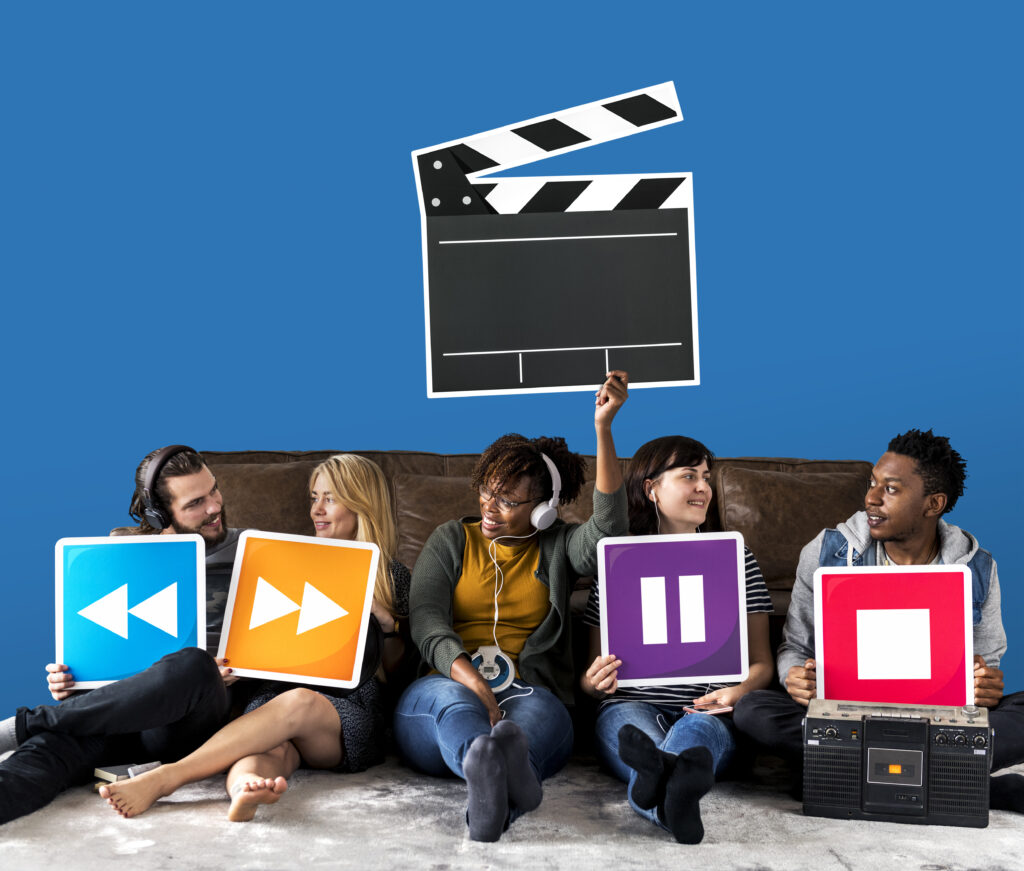In recent years, the entertainment industry has undergone a major transformation, driven by the explosive growth of web series, social media, and online apps. These new players have fundamentally altered how audiences consume content, and the traditional titans of the film industry—Bollywood, Hollywood, and other film industries around the world—are beginning to feel the heat. The rise of these digital platforms presents a unique challenge to the established film industries, but it also provides opportunities for innovation and reinvention. This article explores how the growing prominence of digital content and the shifting dynamics of media consumption are reshaping the entertainment landscape, posing a significant challenge to the traditional filmmaking business.
The Shift in Content Consumption Habits
One of the most significant changes brought about by the rise of web series, social media, and online apps is the shift in how content is consumed. In the past, moviegoers had limited options: they would visit theaters to watch the latest releases or wait for films to appear on television or DVDs. Today, however, streaming platforms like Netflix, Amazon Prime Video, Disney+, Hotstar, and others offer an extensive library of content that can be accessed from anywhere at any time.
Streaming platforms have revolutionized entertainment consumption by offering viewers convenience, choice, and flexibility. No longer do audiences need to wait for scheduled programming or brave the crowds at a movie theater. They can watch what they want, when they want, and on the device of their choice. This has led to a massive shift in the entertainment industry, where traditional cinemas are experiencing a decline in attendance as more people turn to digital platforms.
While Hollywood and Bollywood have gradually adopted digital platforms for movie releases, they still largely rely on theater and cinema revenues as a primary source of income. The rise of online content presents a direct challenge to this traditional business model, as audiences increasingly prioritize the ease and accessibility of digital streaming.
The Popularity of Web Series: A New Format for Storytelling
Web series have become a dominant force in the entertainment world, offering a fresh alternative to traditional films. Unlike movies, which typically have a runtime of 1.5 to 3 hours, web series offer a more flexible format that allows for longer, more intricate storytelling. A typical web series can span multiple episodes, seasons, and genres, giving creators more room to develop characters, plotlines, and themes.
For instance, web series like Stranger Things (Hollywood), Sacred Games (Bollywood), Money Heist (Spain), and The Mandalorian (Hollywood) have gained immense popularity, attracting millions of viewers globally. These series have revolutionized how audiences perceive entertainment, with many viewers preferring the binge-watching experience of a web series over the singular viewing experience of a movie.
One of the key advantages of web series is the ability to explore more diverse, experimental, and niche content that might not be commercially viable in a traditional film format. Web series often tackle complex, socially relevant, and taboo subjects—such as mental health, LGBTQIA+ issues, and societal inequalities—allowing for more nuanced storytelling and attracting a broad spectrum of viewers. As a result, web series are rapidly becoming a preferred choice for young, digitally-savvy audiences who crave authenticity, diversity, and novelty in their entertainment.
Social Media and User-Generated Content: The Rise of Independent Creators
Social media platforms like YouTube, Instagram, TikTok, and Twitter have become powerful tools for independent creators to reach global audiences. These platforms allow anyone with a smartphone and an internet connection to create and share content, from short films and music videos to comedy sketches and tutorials. The democratization of content creation means that more people than ever before are producing their own entertainment and building followings online.
Platforms like YouTube have made it possible for creators to monetize their content through ads, sponsorships, and merchandise sales. Many independent filmmakers and content creators have found success on these platforms, building careers without the backing of major studios or production houses. For example, YouTubers like PewDiePie, Lilly Singh, and Bhuvan Bam have amassed millions of followers and created significant cultural influence—challenging the traditional norms of content creation and distribution.
In the case of TikTok and Instagram, short-form video content has become a dominant trend, with millions of users regularly posting and consuming bite-sized videos. This format has given rise to influencers, who have become powerful figures in the entertainment world, often eclipsing traditional celebrities in terms of their reach and influence. Brands, advertisers, and even filmmakers now collaborate with these influencers to promote products or create content, further blurring the lines between traditional media and social media-driven content.
This shift in content creation is a direct challenge to Bollywood and Hollywood, both of which rely on high-budget productions, star power, and traditional distribution methods. As social media platforms continue to grow, the film industry is forced to rethink its approach to filmmaking and distribution, especially when it comes to attracting younger audiences who are more likely to engage with online content.
The Convenience of Online Apps and Mobile Content
The proliferation of smartphones and mobile applications has also played a crucial role in the rise of online content. Mobile apps like Netflix, Amazon Prime, Hotstar, MX Player, and YouTube have made it easier than ever for users to access their favorite movies, web series, and shows on the go. This convenience has played a significant role in shifting the entertainment landscape, as more people are consuming media on their mobile devices rather than in cinemas or on television sets.
Online apps have not only made it easier to access content but have also introduced features like personalized recommendations, subtitles in multiple languages, and interactive user interfaces that enhance the viewing experience. These features allow streaming platforms to cater to diverse audiences across the globe, offering content that suits various tastes, cultures, and languages. As a result, even small-scale or indie filmmakers now have the opportunity to reach a global audience through these platforms, further diminishing the dominance of traditional film studios.
For Bollywood and Hollywood, this represents both a challenge and an opportunity. While online apps are competing with cinemas and traditional TV networks, they also offer a new avenue for distributing films and reaching audiences who may not be able to access theaters or prefer the convenience of streaming.
The Threat to Traditional Film Industries
The rise of web series, social media content, and online apps presents a significant challenge to traditional film industries like Bollywood and Hollywood. For one, the growing popularity of digital content is directly eroding theater attendance, which has historically been a major revenue source for filmmakers. The COVID-19 pandemic accelerated this trend, with many cinemas shutting down and viewers flocking to streaming platforms for entertainment.
Moreover, the ease of content creation and distribution on digital platforms means that even independent filmmakers or small studios can now reach global audiences without relying on the traditional distribution systems of Hollywood or Bollywood. This democratization of content creation threatens the established business models of the film industry, which have long been dominated by a few major studios and production houses.
However, this shift does not necessarily signal the end of traditional film industries. Instead, it is an opportunity for Bollywood and Hollywood to adapt, innovate, and evolve in response to changing consumer preferences. Many major film studios are already embracing digital platforms, releasing movies on streaming services or producing exclusive content for online platforms. In fact, some Hollywood films have seen massive success on streaming services like Netflix and Amazon Prime.
Conclusion: Embracing Change and Innovation
The rise of web series, social media, and online apps is indeed a significant challenge for the traditional film industry. However, rather than viewing these new players as a threat, Bollywood, Hollywood, and other film industries have an opportunity to adapt and thrive in this new digital age. By embracing streaming platforms, diversifying content formats, and engaging with the growing trend of user-generated content, the traditional film industry can find new avenues for success and innovation.
Ultimately, the entertainment industry is evolving, and the lines between traditional cinema, web series, and social media content are becoming increasingly blurred. The future of entertainment will likely be defined by a convergence of these mediums, with new forms of storytelling emerging to meet the demands of an ever-changing, digitally connected audience.



